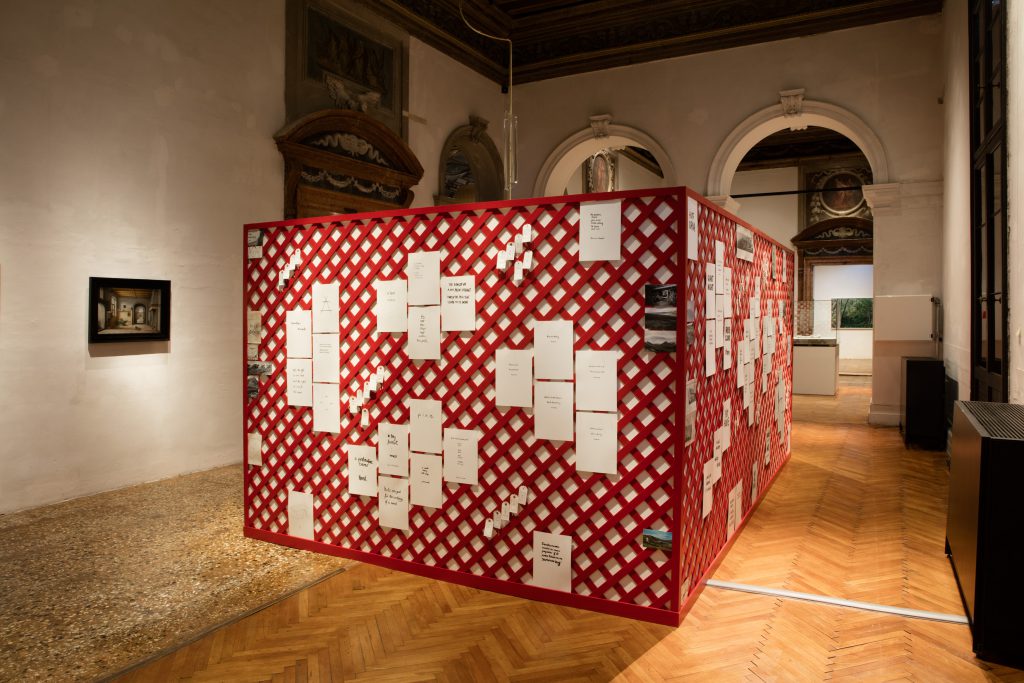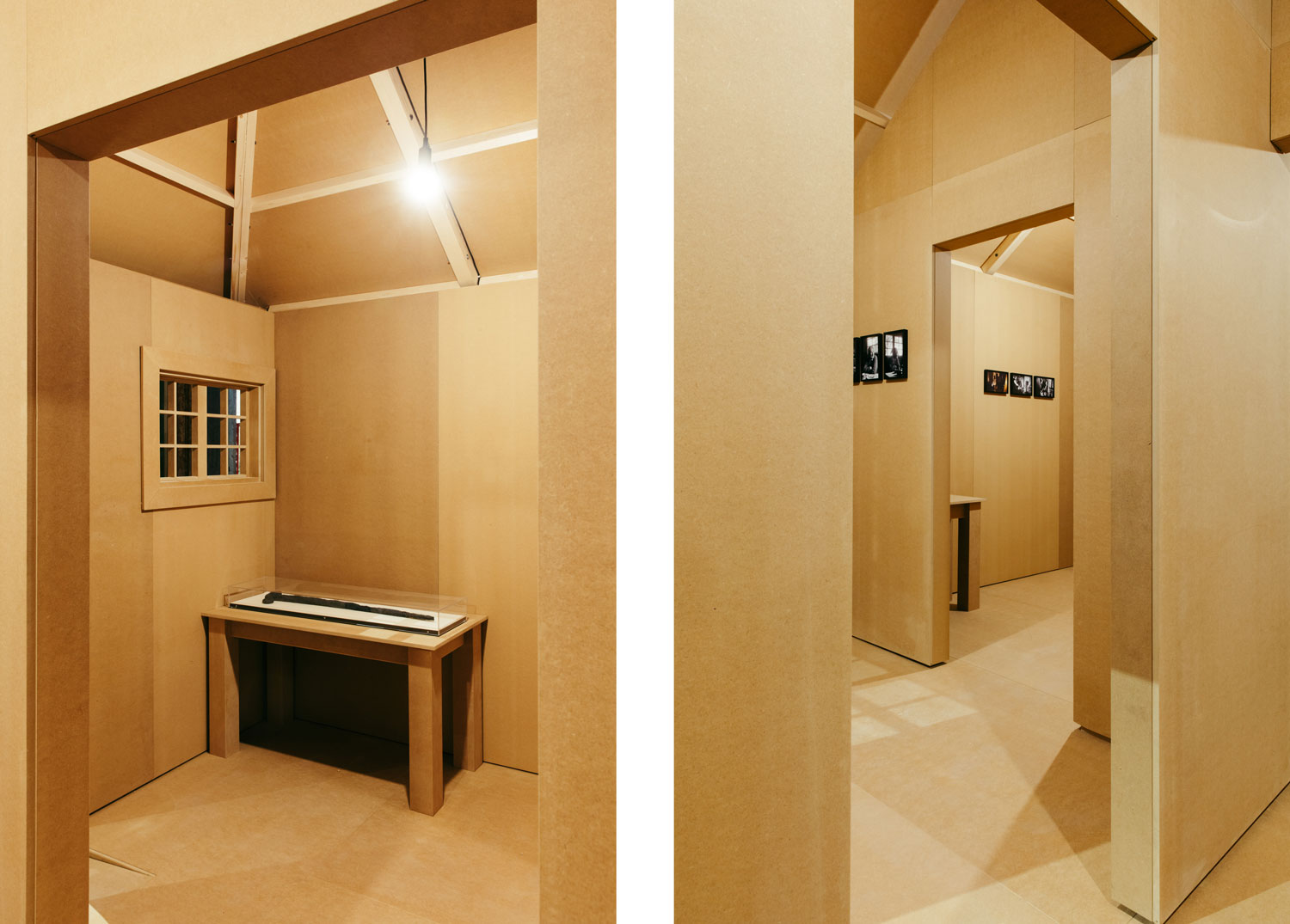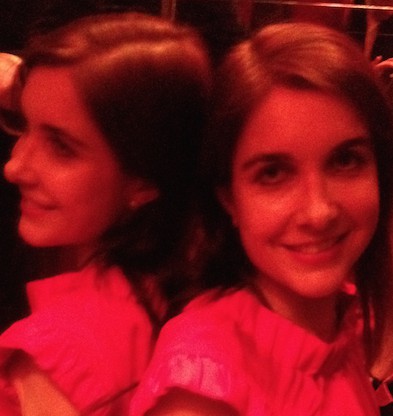The Fondazione Prada's exhibition 'Machines à Penser' explores how three 20th-Century philosophers either sought retreat in a hut or had a hut named after them. Curated by Dieter Roelstraete, the premise of the show is that of humble, secluded wood cabins being vital as “machines for thinking”. The title is a pun on Le Corbusier, who had a hut called Le Cabanon in Roquebrune-Cap Martin in the south of France, characterising a house as a “machine for living”.
The exhibition interconnects the Black Forest hut of the German philosopher Martin Heidegger, the mountainous hut of the Austrian-British philosopher Ludwig Wittgenstein in a Norwegian fjord and the sculpture 'Adorno's Hut' (1986-1987) by Ian Hamilton Finlay that was made in tribute to the German philosopher Theodor Adorno. Adorno never had a hut; the idea behind the sculpture was purely fictitious. Yet being Jewish, Adorno sought exile in Oxford, New York and California during the Second World War. His position, therefore, stood in direct opposition to that of his contemporary Heidegger, a Nazi sympathiser.

This intellectual triangulation is tackled in a richly engaging way in this thematic show. Pinpointing a clear relationship between philosophy and visual art, the dozens of artworks reveal how the notion of a secluded existence is treated by contemporary artists.
“This was an old dream of mine to bring this project to fruition,” Roelstraete, who read philosophy, told DAMNº. “These three characters – Wittgenstein, Heidegger and Adorno – have been very important to me throughout my theoretical practice and thinking around art. I saw the remains of Wittgenstein's hut in Norway, I visited Heidegger's hut in the Black Forest and I travelled to Los Angeles to walk around the area where Adorno lived in exile as I wanted to understand the places that gave birth to their thinking.”

The huts of Heidegger and Wittgenstein have been reconstructed on a slightly smaller scale. Photos of Heidegger, known for his philosophy 'Building, Dwelling, Thinking', adorn the interior of his reconstructed hut along with Christian imagery.
Goshka Macuga was commissioned to make three sculptures depicting the heads of the three philosophers, the fresh flowers protruding from them suggestive of ideas growing in their brains.

Alec Finlay's sculptural installation 'Hutopia' (2018), made with Hannah Devereux, Mhairi Law, Moreton, Lucy Duncombe and James Dyas Davidson, features hand-written musings on its exterior
Abstract paintings on landscape photographs by Gerhard Richter and a sculpture by Anselm Kiefer, among other artworks, resonate with the sense of isolation and tranquillity. More specifically, Sophie Nys' video 'Die Hütte' (2007) was shot during a visit to Heidegger's Black Forest retreat while Guy Moreton's large-scale photographs were taken in the Norwegian village of Skjolden where Wittgenstein lived deep in a fjord. The only sculpture, 'Head of a Girl' (1925-1928), that Wittgenstein made in his lifetime also features among the exhibits.

On show are Guy Moreton's large-scale photographs, which were taken in the Norwegian village of Skjolden
The ground floor, meanwhile, is dedicated to Adorno, imagining the kind of life that he may have constructed for himself in exile in Los Angeles. Setting the stage here is Patrick Lakey's hugely enlarged cropped photo of Villa Aurora in Hollywood, which was a meeting place for Jewish intellectuals in exile from Germany in the late 1930s-early 1940s. “Adorno was a very urbane, sophisticated character and you would never imagine him dwelling inside a hut,” Roelstraete says. “But the notion of the philosopher in exile is not so different from the philosopher in retreat or seclusion.”

The kind of utopia encapsulated by a hut is explored by the artist Alec Finlay, son of the late Scottish artist Ian Hamilton Finlay, in his sculptural installation 'Hutopia' (2018), made with Hannah Devereux, Mhairi Law, Moreton, Lucy Duncombe and James Dyas Davidson. Attached to the exterior of Finlay's red-and-white hut are hand-written musings on what a hut embodies, such as 'a hut is a pocket of resistance hidden in the hills', 'the most radical body of song was created in plantation cabins' and 'protest shelters are designed to be above the law'. Inside the structure is an early 16th-century xylography, made from an engraving on wood, of St Jerome in his study by Albrecht Dürer, and a painting by St Jerome from the same period by Bartolomeo Montagna – both conveying intellectual isolation.

A video on show by Sophie Nys, titled Die Hütte, was shot during a visit to philosopher Martin Heidegger's Black Forest retreat
The exhibition coincides with the Venice Architecture Biennale, curated by Yvonne Farrell and Shelley McNamara of Grafton Architects in Dublin. Although not officially linked to the biennale's Freespace theme, Machines à Penser certainly advocates for a hut offering free space for thinking.
Machines à Penser is at Fondazione Prada, Venice, until 25 November 2018.


